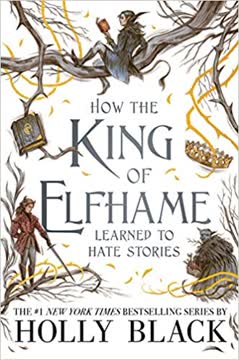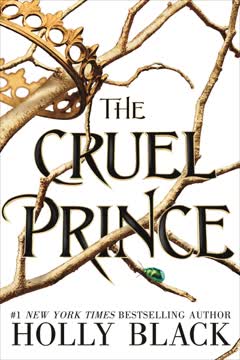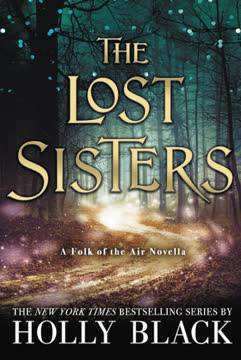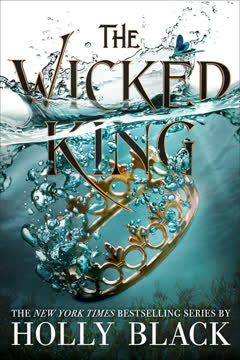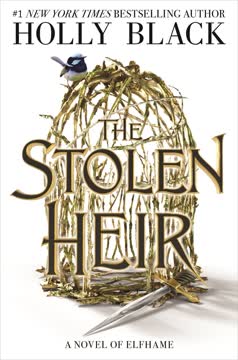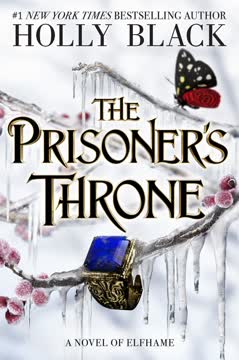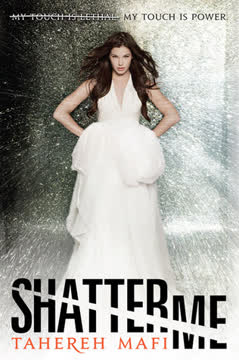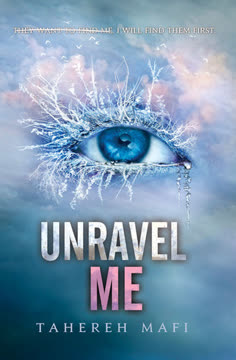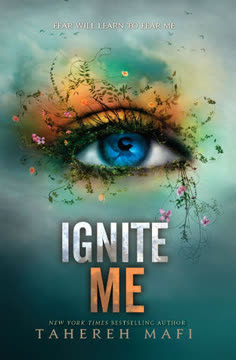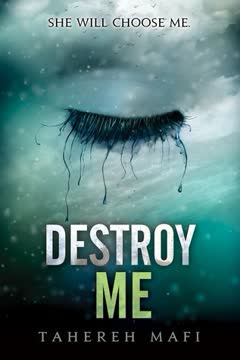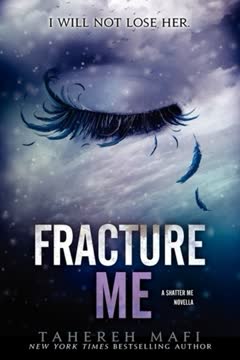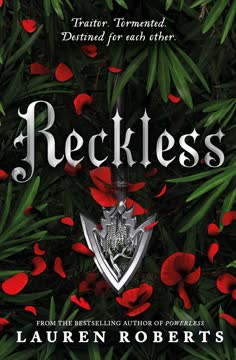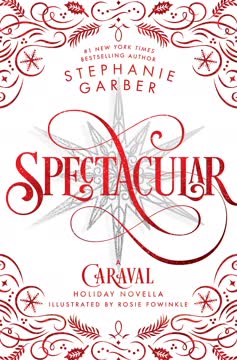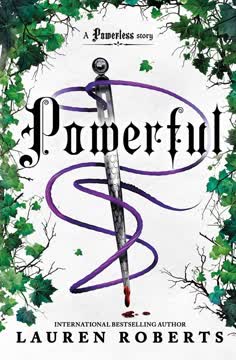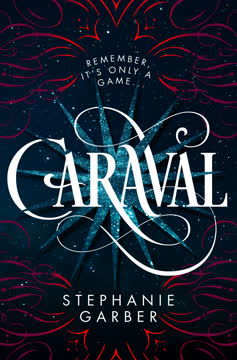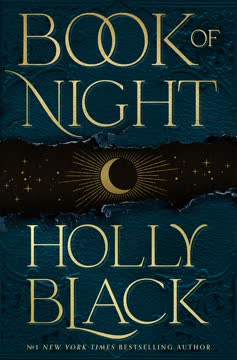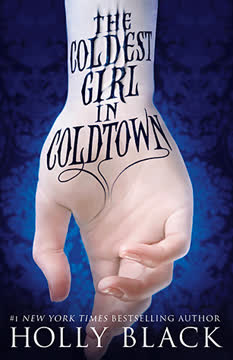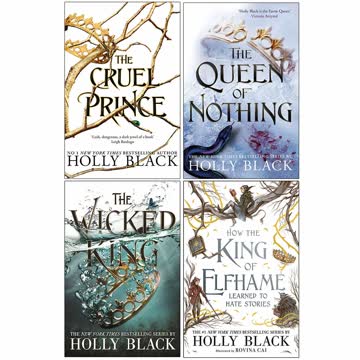Plot Summary
Mortal World Visit
Cardan, the King of Elfhame, visits the mortal world with his queen, Jude. Their relationship is a complex dance of love and rivalry, rooted in their tumultuous past. Cardan, once a cruel prince, now finds himself in a position of power and responsibility, yet he struggles with his past actions and the stories that shaped him. The mortal world offers a temporary escape, but also a reminder of the dangers and unpredictability of their lives.
Princely Rudeness
As a child, Cardan was neglected and mistreated, leading him to develop a cruel and callous demeanor. His interactions with others were marked by rudeness and disdain, a defense mechanism against the vulnerability he felt. This chapter delves into his early life, exploring the roots of his behavior and the prophecy that loomed over him, predicting his role in the downfall of the crown.
Stories and Hatred
Cardan learns the impact of stories on his life and identity. A troll named Aslog tells him a tale about a boy with a heart of stone, a story that mirrors Cardan's own life. This narrative becomes a pivotal moment for Cardan, as he begins to understand the power of stories to shape reality and influence one's destiny. His hatred for stories grows, as they often reflect the harsh truths he wishes to avoid.
The Troll's Tale
Cardan encounters Aslog again, who challenges him with another story. This time, the tale is about a boy who learns the value of fear and love. Through this story, Cardan confronts his own fears and the possibility of change. The troll's tale serves as a catalyst for Cardan's introspection, forcing him to reconsider his past actions and the person he has become.
A Villain's Path
As Cardan grows older, he embraces his role as a villain, finding power and freedom in his cruelty. He surrounds himself with a group of like-minded individuals, including Nicasia, Valerian, and Locke, who encourage his worst impulses. This chapter explores Cardan's internal conflict and the allure of villainy, as well as the consequences of his actions on those around him.
Betrayal and Heartbreak
Cardan's relationship with Nicasia and Locke becomes strained as betrayal and heartbreak enter the picture. Nicasia's infidelity with Locke shatters Cardan's trust, leading to a violent confrontation. This betrayal forces Cardan to confront his feelings of inadequacy and the fragile nature of his relationships. The chapter highlights the emotional turmoil and the breaking point that propels Cardan towards change.
Redemption's Price
In the final chapter, Cardan faces a choice: continue down the path of villainy or seek redemption. He encounters Aslog once more, and through their interaction, he realizes the importance of change and the possibility of a different future. Cardan's journey towards redemption is fraught with challenges, but he begins to understand the value of vulnerability and the strength found in embracing one's true self.
Characters
Cardan
Cardan is the King of Elfhame, a character marked by his tumultuous past and the prophecy that haunts him. Raised in a world of cruelty and neglect, he developed a harsh exterior to protect himself. His journey is one of self-discovery, as he grapples with his identity, the power of stories, and the possibility of redemption. Cardan's relationship with Jude is central to his development, as she challenges him to confront his past and embrace change.
Jude
Jude is the mortal queen of Elfhame, known for her strength and resilience. Raised in the world of the Fae, she learned to navigate its dangers and politics with cunning and bravery. Her relationship with Cardan is complex, rooted in both love and rivalry. Jude's influence on Cardan is profound, as she pushes him to confront his past and strive for a better future. Her determination and courage are pivotal in shaping the narrative.
Aslog
Aslog is a troll who plays a significant role in Cardan's journey. Through her stories, she challenges Cardan to reflect on his life and the choices he has made. Aslog's tales serve as a mirror to Cardan's own experiences, forcing him to confront uncomfortable truths. Her presence in the story is a reminder of the power of narratives and the potential for change.
Nicasia
Nicasia is a princess of the Undersea and a former lover of Cardan. Her relationship with him is marked by betrayal and manipulation, as she seeks power and influence. Nicasia's actions serve as a catalyst for Cardan's introspection, highlighting the fragility of trust and the consequences of deceit. Her character embodies the allure and danger of the Fae world.
Locke
Locke is a member of Cardan's inner circle, known for his charm and cunning. He thrives on chaos and manipulation, often playing others against each other for his amusement. Locke's betrayal of Cardan with Nicasia is a turning point in the story, forcing Cardan to reevaluate his relationships and the path he has chosen. Locke's character represents the darker aspects of the Fae world.
Valerian
Valerian is another member of Cardan's circle, known for his love of cruelty and chaos. He encourages Cardan's worst impulses, reveling in the power and fear they command. Valerian's influence on Cardan is significant, as he represents the seductive nature of villainy and the consequences of unchecked power. His character serves as a foil to Cardan's potential for change.
Eldred
Eldred is the former Great King of Elfhame and Cardan's father. His neglect and indifference towards Cardan shaped much of the prince's early life, contributing to his feelings of inadequacy and resentment. Eldred's lack of involvement in Cardan's life is a source of pain and anger for the young king, influencing his actions and decisions throughout the story.
Madoc
Madoc is the Great General of Elfhame and Jude's adoptive father. Known for his strategic mind and ruthless nature, he plays a significant role in Jude's upbringing and her understanding of the Fae world. Madoc's influence on Jude is profound, shaping her into a formidable and cunning queen. His character represents the complexities of power and loyalty in the Fae realm.
Vivi
Vivi is Jude's older sister, known for her rebellious nature and independence. Unlike Jude, Vivi chooses to live in the mortal world, rejecting the politics and dangers of Elfhame. Her relationship with Jude is one of support and understanding, providing a contrast to the Fae world's harshness. Vivi's character highlights the theme of choice and the possibility of a different life.
Heather
Heather is Vivi's mortal partner, known for her compassion and understanding. Her relationship with Vivi provides a glimpse into the possibility of harmony between the mortal and Fae worlds. Heather's character represents the potential for love and acceptance, even in the face of differences and challenges.
Plot Devices
Prophecy
The prophecy surrounding Cardan's birth plays a crucial role in shaping his life and actions. It predicts his role in the downfall of the crown, casting a shadow over his relationships and decisions. The prophecy serves as a constant reminder of his potential for destruction, influencing his interactions with others and his journey towards redemption.
Stories
Stories are a central theme in the narrative, influencing characters' perceptions and actions. Cardan's hatred for stories stems from their ability to reflect harsh truths and shape reality. Aslog's tales serve as a catalyst for Cardan's introspection, highlighting the transformative power of narratives. The book explores how stories can both trap and liberate individuals, depending on how they are interpreted.
Betrayal
Betrayal is a recurring motif in the story, driving character development and plot progression. Cardan's betrayal by Nicasia and Locke forces him to confront his feelings of inadequacy and the fragility of trust. This betrayal serves as a turning point, propelling Cardan towards introspection and the possibility of redemption. The theme of betrayal highlights the complexities of relationships and the consequences of deceit.
Redemption
Cardan's journey is one of self-discovery and redemption, as he grapples with his past actions and the possibility of change. The narrative explores the challenges and sacrifices required for redemption, as well as the potential for growth and transformation. Cardan's interactions with Jude and Aslog are pivotal in his journey, offering him opportunities to confront his past and embrace a different future.
Analysis
"How the King of Elfhame Learned to Hate Stories" is a story about transformation, identity, and the power of narratives. Through Cardan's journey, the book explores themes of redemption, the impact of stories, and the complexities of relationships. Cardan's character development is central to the narrative, as he confronts his past and strives for a better future. The book highlights the potential for change and growth, even in the face of adversity and betrayal. It also emphasizes the importance of understanding and embracing one's true self, as well as the power of love and vulnerability in overcoming challenges. Overall, the story is a compelling exploration of the human (and Fae) condition, offering readers a nuanced and thought-provoking narrative.
Last updated:
FAQ
Synopsis & Basic Details
What is How the King of Elfhame Learned to Hate Stories about?
- Cardan's Origin Story: This novella delves into the formative years of Cardan, the King of Elfhame, exploring his neglected childhood, his embrace of villainy, and the complex journey that led him to the throne and his eventual marriage to Jude Duarte. It's a deep dive into his past, revealing the psychological underpinnings of his infamous cruelty and his evolving relationship with power and stories.
- A Collection of Vignettes: The narrative unfolds through a series of interconnected flashbacks and present-day moments, showcasing pivotal events from Cardan's life, including his interactions with his abusive brother Balekin, his tumultuous relationship with Nicasia and Locke, and his recurring encounters with the troll Aslog. Each chapter illuminates a different facet of his character and the influences that shaped him.
- The Power of Narrative: At its core, the book explores the profound impact of stories—both those told to Cardan and those he tells himself—on identity and destiny. It culminates in a present-day challenge where Cardan must confront a past injustice, forcing him to re-evaluate his role as king and the kind of story he wants his life to be.
Why should I read How the King of Elfhame Learned to Hate Stories?
- Deepens Cardan's Character: For fans of The Folk of the Air series, this book offers an unparalleled look into Cardan's psyche, explaining why he became the cruel prince and then the complex king. It provides crucial context for his actions and motivations in the main series, enriching the reader's understanding of his journey.
- Explores Core Themes: Beyond character development, the novella masterfully explores themes of neglect, abuse, the nature of power, the malleability of truth through storytelling, and the difficult path to redemption. It challenges readers to consider how past traumas shape identity and the possibility of choosing a different future.
- Exquisite Prose and Art: Holly Black's signature lyrical writing is complemented by Rovina Cai's stunning illustrations, which add a layer of dark beauty and emotional depth to Cardan's story. The visual elements enhance the magical atmosphere and the psychological intensity of the narrative, making it a truly immersive experience.
What is the background of How the King of Elfhame Learned to Hate Stories?
- Elfhame's Royal Dynamics: The story is set within the treacherous world of Elfhame, a realm of fae where power is constantly contested and royal lineage is fraught with intrigue. Cardan's background as the youngest, often overlooked, son of the former Great King Eldred, and the subject of a dark prophecy, is central to his development.
- Mortal and Fae Intersections: The narrative frequently shifts between the fae world and the mortal realm, highlighting the cultural clashes and personal connections that bridge these two worlds. Jude's mortal heritage and Vivi's choice to live among humans provide a contrasting perspective to Cardan's purely fae upbringing, influencing his understanding of both realms.
- Pre-existing Lore Expansion: This novella expands upon the established lore of The Folk of the Air series, offering insights into the history of certain fae figures like Queen Gliten and the troll Aslog, and detailing the political machinations that shaped Cardan's early life before the events of The Cruel Prince.
What are the most memorable quotes in How the King of Elfhame Learned to Hate Stories?
- "Os vilões eram maravilhosos. Podiam ser cruéis e egoístas, se admirar na frente de espelhos e envenenar maçãs e prender garotas em montanhas de vidro.": This quote encapsulates Cardan's early embrace of villainy, revealing his cynical yet almost romanticized view of evil as a path to power and self-expression, a key aspect of his character development in How the King of Elfhame Learned to Hate Stories.
- "Você me disse uma vez, histórias mudam. Agora, está na hora de mudar a sua.": Spoken by Cardan to Aslog, this line is a pivotal moment of self-awareness and agency, demonstrating his evolution from a passive recipient of stories to an active shaper of his own narrative and the narratives of others, a central theme in How the King of Elfhame Learned to Hate Stories explained.
- "Tem uma coisa de que eu gostei ao bancar o herói. A única parte boa. E foi não ter que morrer de medo por você.": This vulnerable admission to Jude at the story's climax reveals the depth of Cardan's love and his true motivation for his "heroic" act, highlighting the emotional core of their relationship and his journey towards redemption.
What writing style, narrative choices, and literary techniques does Holly Black use?
- Non-Linear Narrative Structure: Holly Black employs a fragmented, non-chronological storytelling approach, weaving together flashbacks from Cardan's childhood and adolescence with present-day events. This technique allows for a gradual unveiling of Cardan's past, creating suspense and deepening the psychological impact of his character arc in How the King of Elfhame Learned to Hate Stories analysis.
- First-Person Limited (Cardan's Perspective): The entire novella is told from Cardan's point of view, offering intimate access to his thoughts, insecurities, and evolving perceptions. This narrative choice is crucial for understanding Cardan's motivations and his internal struggles, providing a unique lens into the world of Elfhame and his complex relationship with Jude.
- Symbolism and Metaphor: Black extensively uses symbolism, particularly the recurring motif of Cardan's "heart" transforming from stone to fire to glass, to represent his emotional states and psychological development. The contrast between the mortal and fae worlds, and the power of stories themselves, are also rich with metaphorical meaning, enhancing the thematic depth of themes in How the King of Elfhame Learned to Hate Stories.
Hidden Details & Subtle Connections
What are some minor details that add significant meaning?
- Cardan's Hidden Tail: The detail that Cardan "escondia, pois deixava muito às claras o que ele treinou para não deixar transparecer" (III) reveals his early attempts to suppress his vulnerability and true fae nature. His tail, a symbol of his wildness and otherness, becomes something to conceal as he crafts his villainous persona, highlighting his internal conflict and desire for control over his image.
- Jude's "Strange Curve of her Ear": Cardan's initial, almost obsessive, observation of Jude's ear and her "solid" presence (V) is a subtle indicator of his fascination with her unique mortal qualities. This detail foreshadows his eventual deep connection to her grounded reality, contrasting with the ethereal and often deceptive nature of the fae world he inhabits, a key element in Cardan's motivations explained.
- The Gas Station Books: The brief description of the romance and mystery novels at the mortal world gas station (X) offers a humorous, meta-commentary on human storytelling. The titles like "O duque do duque" and "O detetive sonolento" subtly mock mortal narratives while also hinting at Cardan's growing, albeit reluctant, appreciation for the simplicity and directness of human stories compared to the fae's intricate deceptions.
What are some subtle foreshadowing and callbacks?
- Aslog's First Story's Shifting Morality: Aslog's initial tale of the "rude boy" (II) and its later, altered retelling (VII) subtly foreshadows the novella's central theme: stories are not fixed truths but malleable narratives. This narrative device highlights how perspective and context can change meaning, directly influencing Cardan's eventual decision to manipulate a story for a desired outcome, a crucial aspect of How the King of Elfhame Learned to Hate Stories symbolism.
- Cardan's Desire to Escape Elfhame: His immediate agreement to Nicasia's proposal to live in the Undersea (VI) is a callback to his childhood neglect and his deep-seated desire to flee his father's court. This early longing for escape foreshadows his later, more mature attempts to define his own path, even if it means embracing a role he initially despises, revealing Cardan's motivations.
- The Coin Trick and Destiny: Barata's lesson on spinning a coin and Cardan's thought, "Quem não quer controlar o destino?" (VIII), subtly foreshadows his ultimate act of narrative manipulation with Aslog. It highlights his long-standing desire for agency and control over his fate, a theme that culminates in his decision to rewrite Aslog's story and his own, impacting the How the King of Elfhame Learned to Hate Stories ending explained.
What are some unexpected character connections?
- Rhyia's Gift of Alice in Wonderland: Cardan's sister Rhyia, who "raramente frequentava a Corte" (VII), unexpectedly gives him Alice no País das Maravilhas. This seemingly minor interaction establishes a rare moment of genuine connection and kindness in Cardan's early life, subtly influencing his later appreciation for human stories and their capacity for "absurdity" and hidden morals, a unique insight into Cardan's character analysis.
- Cardan's Identification with Aslog: Despite their adversarial relationship, Cardan finds a strange kinship with Aslog, recognizing her as someone who also "não teve o que mereceu" (XI) from the royal court. This shared experience of injustice and neglect forms an unexpected bond, allowing Cardan to empathize with her plight and ultimately choose to help her, showcasing a deeper layer of Cardan's motivations.
- Jude's Unspoken Influence on Cardan's Heroism: Cardan's decision to confront Aslog alone, despite his initial reluctance for heroism, is deeply influenced by his desire to protect Jude and prove himself worthy. His final admission, "A única parte boa. E foi não ter que morrer de medo por você" (XI), reveals that his heroic act was not for glory, but a profound expression of his love and fear for her safety, highlighting the evolving relationship dynamics between Cardan and Jude.
Who are the most significant supporting characters?
- Aslog, the Narrative Mirror: Beyond her role as a storyteller, Aslog serves as a crucial narrative mirror for Cardan, reflecting his own journey of injustice, anger, and the desire for retribution. Her evolving stories about the "rude boy" directly parallel Cardan's own transformation, making her instrumental in his self-discovery and his eventual mastery of narrative, central to How the King of Elfhame Learned to Hate Stories themes.
- Balekin, the Abusive Architect: Balekin is more than just a cruel brother; he is the primary architect of Cardan's villainous persona, teaching him to weaponize his status and embrace cruelty as a shield. His abuse and "tutelage" (III) are foundational to Cardan's psychological makeup, making him a pivotal figure in understanding Cardan's motivations and his initial hatred for vulnerability.
- Rhyia, the Gentle Catalyst: Rhyia's brief but impactful appearance, offering Cardan Alice in Wonderland (VII), positions her as a subtle catalyst for his intellectual and emotional growth. Her act of kindness introduces him to a different kind of story, one that values absurdity and hidden morals, gently nudging him towards a broader understanding of the world beyond Elfhame's rigid court.
Psychological, Emotional, & Relational Analysis
What are some unspoken motivations of the characters?
- Cardan's Deep Need for Validation: Beneath his veneer of cruelty and indifference, Cardan harbors a profound, unspoken need for validation and belonging, stemming from his neglectful childhood. His initial embrace of villainy and his desire for Jude to "admirá-lo. Ajoelhar-se na frente dele e implorar pela misericórdia real" (VIII) are desperate attempts to command respect and attention he never received from his father, a core aspect of Cardan's motivations.
- Jude's Burden of Responsibility: Jude's relentless drive to solve every problem and fight every monster (I) is an unspoken motivation rooted in her mortal vulnerability and her need to prove her worth in Elfhame. Her self-reliance is a defense mechanism, a way to assert control in a world that constantly threatens her, highlighting her psychological complexities and the *themes in
Review Summary
How the King of Elfhame Learned to Hate Stories received overwhelmingly positive reviews, with readers praising Cardan's character development, the beautiful illustrations, and the fairy tale-like atmosphere. Many appreciated gaining insight into Cardan's perspective and backstory. Some fans wished for more Jude and Cardan interactions, while others found the novella too short. Overall, readers were thrilled to return to the world of Elfhame and experience Cardan's journey through short, interconnected stories. The book was widely considered a must-read for fans of the series.
Elfhame Series
Similar Books
Download PDF
Download EPUB
.epub digital book format is ideal for reading ebooks on phones, tablets, and e-readers.
